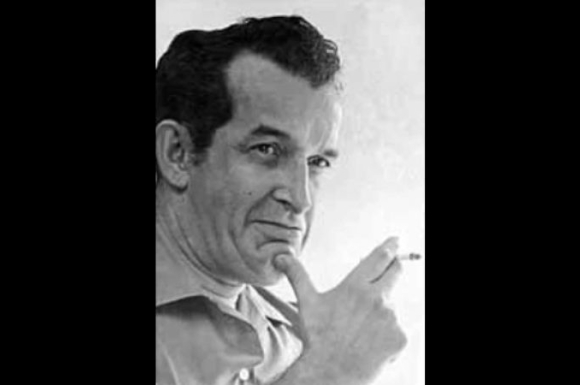
Biography
Antonio Prohías, a Cuban political artist, gained renown through his work on MAD magazine’s “Spy vs. Spy” series. A native of Cienfuegos, Cuba, his childhood teachers fostered his artistic talent by encouraging him to draw. He briefly studied at the Academia Nacional de Bellas Artes San Alejandro in Havana before leaving to become a full-time newspaper cartoonist.
One of his earliest comics, "Liborito," centered on a man who was a spin-off of the character Liborio, a figure who represented the people of Cuba from 1905 until 1931. The comic debuted in 1948 in Diario de la Marina. Prohías continued creating comics and worked for various publications, including El Mundo. There, he developed one of his most notable early series, “El Hombre Siniestro.” The comic was well-received and appeared in other magazines, including Bohemia and Zig-Zag Libre. His work at El Mundo was especially influential, as the newspaper had the largest circulation in Cuba.
During these early years, Prohías’ cartoons were sharply critical of former Cuban dictator Fulgencio Batista. When Fidel Castro eventually overthrew Batista in 1959, Prohías welcomed the change. Castro even praised Prohías’ work against Batista and awarded him a medal. However, Prohías' views on Castro shifted as the new regime became equally repressive, and his growing disapproval emerged in his work. In his comic Tovarich, published in Prensa Libre, he depicted a communist tyrant in the Soviet Union. The comic, while ostensibly about Russia, featured a character heavily reminiscent of Castro and themes that often alluded to Cuba.
Eventually, Prohías’ continued criticism of Castro led to suspicion that he was a CIA spy, and many Cuban magazines refused to publish his work. In 1960, Prohías left Cuba and immigrated to the United States.
Following his move to the United States, Prohías initially worked in a factory to make ends meet. It was during that same year that he discovered MAD magazine, a pivotal moment in his life that would shape his interests and humor for years to come. In July 1960, he visited the MAD offices without an appointment, accompanied by his daughter, who served as his interpreter. He presented a few of his pantomime-style spy comics to editors Al Feldstein and Bill Gaines. Though hesitant at first, they eventually purchased three of his gags for publication.
Prohías began working for MAD in 1961, debuting in issue #60. He appeared in approximately 180 issues and created around 241 “Spy vs. Spy” pages—in addition to six best-selling paperbacks. His innovative and unique approach to the magazine, characterized by wordless pantomime, brought a refreshing change in style to the publication.
His first “Spy vs. Spy” appeared in the January 1961 issue. The comic featured two spy characters whose appearances resembled medieval plague doctors. Their only distinguishing feature was the color of their clothing—black and white. Each strip followed the two spies as they tried to outwit each other. Although formulaic in setup, the comics always introduced a new twist, and the anticipation of which spy would triumph added to the appeal.
Issue #73 introduced a third character—a gray, female spy. Although she starred in 20 comic strips, she was eventually dropped because her consistent victories over both spies made the storylines too predictable.
“Spy vs. Spy” became a staple of MAD and one of the few recurring character strips. It also proved highly marketable. The comic inspired a wide range of merchandise, including action figures, board games, video games, trading cards, and an animated series.
Prohías’ last appearance in the magazine was in issue #269. Although he retired in 1987, the comic’s popularity ensured its continuation by other artists. Don “Duck” Edwing took over as the writer, and Bob Clarke served as the artist. Together, they worked on the comic from 1987 to 1993. After Clarke’s departure, Edwing partnered with George Woodbridge for a few editions before Dave Manak became the full-time artist. Manak and Edwing collaborated from 1993 to 1997. While Manak stopped working on the main magazine version, he continued contributing to MAD’s XL and Classics editions until 2007.
In 1997, Peter Kuper became the comic’s final artist. Edwing continued writing scripts for Kuper until 2002, after which Kuper took over both writing and illustrating duties. Although MAD now mainly features reprints, Kuper’s work still appears occasionally, with the most recent “Spy vs. Spy” published in issue #43, June 2025.
Outside of “Spy vs. Spy,” Prohías contributed other work to MAD, including various one-shot gags and several cover ideas that were later illustrated by Norman Mingo. He also wrote a gag for Don Martin’s final comic, “One Special Day in the Dungeon.”
In 1946, Prohías received the Juan Gualberto Award, an annual prize awarded by the Union of Journalists of Cuba and named after a key leader in Cuba’s War of Independence.
By the 1980s, Prohías suffered from a muscular disease that left him unable to draw. He passed away from lung cancer at the age of 77 in 1998.
Illustrations by Antonio Prohías
Additional Resources
Bibliography
Amelli, Diana Álvarez. “A Tale of Two Cuban Cartoonists.” BOOM! SPLAT!: Comics and Violence, 2024.
Ficarra, John, Lewis Black, and Antonio Prohías. Spy vs. Spy: An Explosive Celebration. New York: Liberty Street, 2015.
Kuper, Peter and Antonio Prohías. Spy vs. Spy: The Secret Files! New York: Mad Books, 2011.
Prohías, Antonio. Spy vs. Spy Omnibus. California: MAD, 2023.
Prohías, Antonio and Grant Geissman. Spy vs. Spy: The Complete Casebook. New York: Watson-Guptill Publications, 2001.
Scott, Cord A. “Cold War Politics, Cuba, and Spy vs. Spy.” Journal of Graphic Novels and Comics, 2020.











_60_60_c1.jpg)



_60_60_c1.jpg)



_60_60_c1.jpg)








